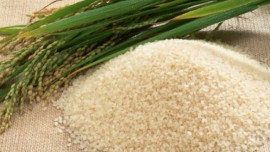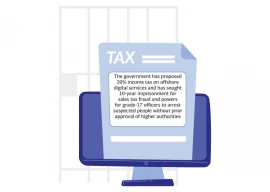
The output of big industries marginally increased by less than 1% during the first quarter of this fiscal year, as the industrial sector continuously suffered from high-interest rates and overall unfavourable business conditions.
The Pakistan Bureau of Statistics (PBS) on Wednesday released figures for Large-Scale Manufacturing (LSM) industries that also showed that the upward movement in the index reversed in September. The LSM sector contracted 3.6% in September compared to the preceding month, according to the national data collecting agency.
According to the data released, the pace of growth in LSM industries marginally grew by 0.7% during the July-September quarter compared to a year ago. It was positive by 1% on a yearly basis.
The figures have been released days before an expected National Accounts Committee meeting that is set to approve the first quarter’s overall economic growth figure. Pakistan has committed with the International Monetary Fund (IMF) that it would release the GDP growth figure on a quarterly basis. The deadline is the end of November.
The National Accounts Committee would also revise last fiscal year’s controversial economic growth rate of 0.3%, which international financial institutions and independent economists have not accepted.
The subdued trends suggest that the industrial sector has been badly affected by the country’s highest-ever interest rates, tight capital and import controls, and high inflationary pressures that are keeping the cost of doing business too high for a longer period.
Sources said that there were discussions within official circles to reduce interest rates from its current level of 22% in the next monetary policy committee. However, they said that there was a divergent inflation forecast by the IMF and the central bank, which may result in maintaining the status quo at least in the next monetary policy.
Read Economy slips into stagflation: Pakistan posts meagre 0.29% GDP growth
Steep currency devaluation has also made raw material expensive and business models unviable. The rupee on Wednesday crossed over Rs288 to a dollar, as the foreign exchange regime remains highly unstable.
During the IMF review talks, the Ministry of Finance had told the lender that the overall economic growth rate may remain in the range of 3% to 3.5% on the back of better growth prospects in the agriculture and industrial sectors.
The industrial sector has about an 18.5% weight in the economy and is projected to grow by 3.3% in this fiscal year. The finance ministry’s expectations for healthy momentum in the industrial sector were based on some signs of improvement in the major industries during the first two months of the fiscal year.
The LSM had posted positive growth of 2.5% in August after 14 months, but the momentum stalled in September with negative growth of 3.6%.
During the July-September quarter, 11 out of 22 sectors witnessed positive growth, which includes food, beverages, wearing apparel, leather products, coke and petroleum products, chemicals, pharmaceuticals, non-metallic mineral products, machinery and equipment, and football.
In July this year, the IMF had assessed that the pace of negative growth in big industries could have been slower had the government not imposed restrictions on imports.
Since large industries contribute heavily to revenue collection and job creation, any change in their growth impacts the government and business sentiment across the board.
The main contributors towards overall negative growth are tobacco, textile, wood products, paper and board, rubber products, iron & steel products, computer, electronic, electrical equipment, automobiles, transport equipment, and furniture.
Published in The Express Tribune, November 16th, 2023.
Like Business on Facebook, follow @TribuneBiz on Twitter to stay informed and join in the conversation.

1737542501-0/BeFunky-collage-(19)1737542501-0-405x300.webp)


1737537702-0/fizza-(79)1737537702-0-165x106.webp)












1737452260-0/Gaddafi-stadium-(2)1737452260-0-270x192.webp)









COMMENTS
Comments are moderated and generally will be posted if they are on-topic and not abusive.
For more information, please see our Comments FAQ